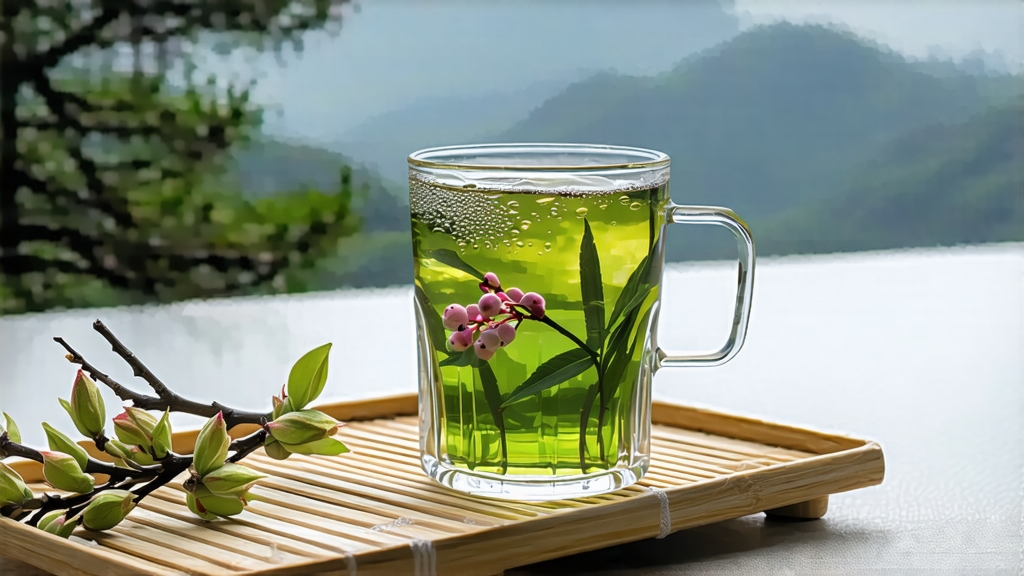
Bai Hao Yin Zhen—“Silver Needle” in English—looks almost too delicate to be real. When you first lift a handful, the buds resemble tiny ivory slivers of moonlight, their surfaces furred with a down so fine it seems spun by silkworms. Yet behind this fragile appearance lies a tea that has weathered dynasties, sailed the tea routes of the Tang, survived the opium wars, and re-emerged in the twenty-first century as the most coveted grade of Chinese white tea. To understand Silver Needle is to understand how the Chinese have long equated subtlety with supremacy: the quieter the leaf, the louder its story.
Origin myths cluster around Fuding and Zhenghe, two neighboring counties on the northeastern coast of Fujian province. Local chronicles credit a Tang-dynasty tea master named Lan Yi with first plucking only the unopened buds in the spring of 855 CE, drying them on hemp cloth under a paulownia tree whose blossoms scented the air. Whether legend or fact, the practice of selecting only the purest buds, untouched by rain or dew, became codified during the Song imperial garden at Beiyuan, where “white tribute tea” was pressed into cakes, stamped with the dragon-phoenix seal, and sent northward to the capital. When the Ming emperor Hongwu banned compressed tea in 1391, loose-leaf white tea survived because its minimal processing—no kneading, no roasting—could be accomplished with nothing more than sunlight and a breeze. Thus Silver Needle became the hermit of Chinese teas, hiding in the mountains while green and black teas conquered the markets of the world.
Botanically, the tea belongs to the Da Bai (Big White) cultivar, a large-bud mutation of Camellia sinensis var. sinensis selected during the Qing dynasty for its thick pubescence and high amino acid content. The buds accumulate L-theanine throughout the cool Fujian winter; when spring arrives, the plant channels its sugars upward, creating a bud that is simultaneously sweet, creamy, and alive with jasmine-like fragrance. Farmers watch the lunar calendar: plucking begins when the night temperature stays above 10 °C and the buds reach 2.5–3 cm, still sheathed in their fish-scale sepals. One kilogram of finished Silver Needle demands roughly thirty thousand buds, all picked before noon on a single day known locally as “Qingming qian”—before the Tomb-Sweeping Festival—when the mountain air is still crisp and the insects have not yet awakened.
Processing looks deceptively simple: wither, dry, sort. Yet within those two verbs lies a choreography perfected over centuries. The buds are spread on bamboo trays called shaiqing, each tray holding no more than a thin layer to prevent self-fermentation. For the first six hours they rest in a shaded corridor where mountain wind, funneled through latticed windows, lowers their moisture from 75 % to roughly 45 %. This initial withering sets the enzymatic stage: polyphenol oxidase remains active but gentle, allowing the tea to develop its signature “white” character—neither green nor black, but something spectral in between. At dusk the trays are moved into a weak late-winter sun for what locals call “the second breath,” a forty-minute exposure that fixes the silvery hairs and coaxes out a faint roast-nut note. Finally, the buds are stacked in a low-temperature charcoal oven, 40 °C for two hours, until moisture drops to 5 %. No rolling, no pan-firing, no shaking: the goal is to let the bud keep its original shape, a closed eyelid of spring.
Grading follows a village-level etiquette. Superior lots—zhen ji pin—must be composed entirely of unopened buds, uniformly silver, with no stem or leaf attached. First grade allows 5 % open leaves; second grade tolerates 10 % and a slightly darker hue caused by later plucking. Connoisseurs look for the “three whites”: white tip, white down, white infusion. When backlit, the dried bud should glow like frosted glass; when dropped into a porcelain gaiwan, it should clink like a sliver of ivory. These tactile aesthetics matter as much as flavor, for Silver Needle is a tea meant to be seen before it is tasted.
Water is its first interpreter. Because the leaf is so lightly processed, any impurities in the kettle are amplified. Experts recommend spring water with a